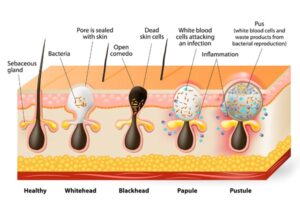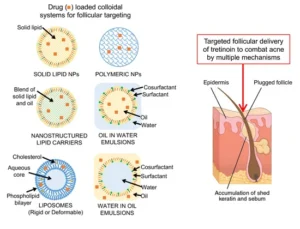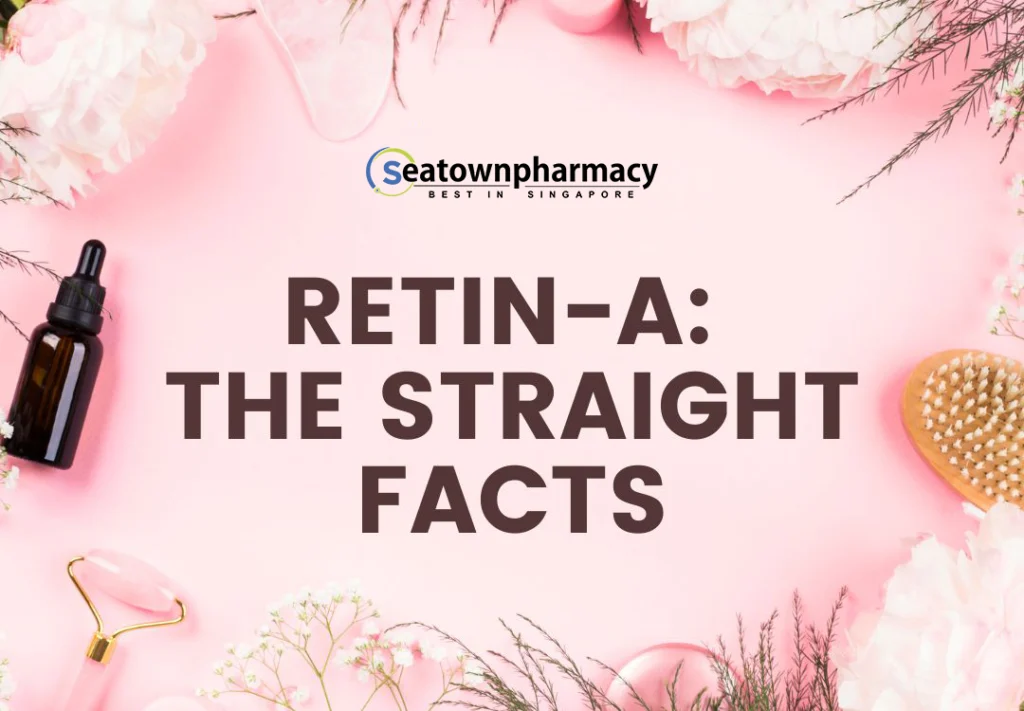Acne is a common skin disorder that impacts almost 80% of teenagers and adults below 25 and negatively affects their aesthetics and self-esteem. Diet, lifestyle, hormonal changes, and the impact of medications are significant causes of acne. But a fact often overlooked is the presence of blemish-prone or acne-prone skin that tends to clog the pores and delay the healing of acne lesions.
Acne-prone skin is skin that has the propensity to develop acne and is often confused with oily skin. After all, oil has always been associated with acne. But there is a difference. The American Academy of Dermatology has stated that while oily skin is more prone to acne, acne can occur in all skin types, irrespective of whether they are dry or oily.
In such conditions, Retin A can successfully help unclog pores and reduce the intensity of acne. Recent evidence guidelines for acne from the American Academy of Dermatology and the European Dermatology Forum have unanimously agreed that retinoids, the precursors of Retin A, play an important role in clearing acne and can be considered as the core of topical therapy because of their comedolytic and anti-inflammatory properties. That, added to their ability to successfully resolve the precursor microcomedone lesions and maintain skin clearance irrespective of the skin type, makes them invaluable in acne conditions, especially chronic or longstanding.
How does it work
It is important to understand the mechanism of action of acne and have a better idea about Tretinoin Cream. Acne or Acne Vulgaris is a disorder of the hair follicles and sebaceous glands due to systemic or physiologic conditions or their combined actions. Abnormal desquamation within the sebaceous follicles leading to obstruction of the pilosebaceous canal, androgen-induced excess sebum production, clogging the pores, proliferation by P. acne bacteria, and altered immune system activity with inflammation are some of the chief pathophysiologic mechanisms for acne vulgaris that is heightened in conditions of acne-prone skins.

Image Source – https://qima-lifesciences.com/en/acne-vulgaris-symptoms-treatments/
In such conditions, retinoids work on the inflammatory pathways and block the toll receptors to fight acne. Blocking the pathways reduces the release of inflammatory cytokines and inhibits cellular inflammation, in addition to reducing keratinocyte proliferation for the visible decrease in acne intensity. Tretinoin is a retinoid that successfully deals with acne vulgaris conditions and provides anti-inflammatory relief.

Image Source – https://www.mdpi.com/1999-4923/11/10/490
Studies have shown that Tretinoin or Retin A normalizes the exfoliation of the follicular epithelium within the pilosebaceous unit and prevents follicular plugging to maintain its therapeutic benefits. It even downregulates the production of nitrates and suppresses respiratory bursts to bring down inflammation markedly. The entire process decreases the irritation to the tissue lining of inflamed skin and creates an environment less conducive to P.acnes.
But is it the best
In comparison to other topical applications for acne, retinoids have different receptor binding affinities to their target retinoic acid receptors that improve their tolerability to a significant extent. A systematic review of 34 clinical studies has shown that the frequency of clinically significant irritation is low with all types of available retinoids, including Tretinoin or Retin A. Adapalene was the most favorable for sensitive skin, and Retin A came second in tolerability.
The study concluded two crucial factors. Firstly, acne-prone or sensitive skin was an important parameter for assessing the efficacy of retinoids. Secondly, Retin A could be used in acne-prone conditions with sensitive skin as a second line of treatment after Adapalene, an equally effective retinoid.
To further evaluate the facial tolerability of topical retinoids, 253 healthy volunteers were enrolled in a study that assessed the tolerability parameters like skin sensitivity, concentration, and the retinoid used for acne conditions. Based on their observation, they concluded that Retin A, along with other retinoids, could produce satisfactory results for acne in acne-prone skin. But the tolerability was better in normal skin compared to sensitive or acne-prone skin. Additionally, the lower strength of Retin A was more suitable for sensitive skin than higher concentrations.
What about variable skin types
Another important advantage of Retin A is its characteristic quality to work on skins of ethnicities other than Caucasian. The effect is markedly so in Asian skin with a predisposition towards acne and post-inflammatory inflammation because of its high melanin content. In addition, Asian skin types tend towards post-inflammatory hyperpigmentation and general skin sensitivity because of a thinner Stratum Corneum and higher Eccrine Gland density.

Image Source – https://my.clevelandclinic.org/health/body/21901-epidermis
The problem extends to Africans, African- Americans, and other dark-skinned ethnicities. Earlier it was only assumed that the efficacy of Retin A was the same in Asians as in Caucasians. But clinical studies have proved the efficacy of Retin A in sensitive Aian skins that, was previously just a hypothesis. In a study including 150 Asian patients with grade II-III acne vulgaris, Tretinoin produced dramatic changes in inflammatory and non-inflammatory lesion counts with more than 70% improvement within 8 weeks. Side effects were significantly less and limited to irritation and erythema and were unaccompanied by systemic side effects of a severe origin.
Retin A and Rosacea
Rosacea is another inflammatory condition often confused with acne vulgaris because of similar inflammatory reactions. Unlike acne vulgaris, acne rosacea is a relapsing condition exacerbated by sun exposure and dietary intake. Clinically it can be identified by intense reddening of the skin and the absence of comedones, a characteristic feature of acne vulgaris. The most crucial factor is the knowledge that people with rosacea have sensitive skin and cannot tolerate too many skin products. Additionally, they are susceptible to environmental triggers like sun exposure and temperature extremes.

Image Source – https://www.herocosmetics.us/blogs/news/this-or-that-the-acne-vs-rosacea-version
Treatment options for acne rosacea consist of systemic or light-based methods, and retinoids or Retin A are not the first lines of treatment. But photodamage is crucial damage occurring in rosacea conditions that Retin A can counter successfully. In a study conducted to evaluate the efficacy of Retin A in rosacea conditions, 30 rosacea subjects were administered Retin A gel and Clindamycin phosphate for 12 weeks. The results showed a dramatic decrease in pustules and papules through Retin A. the study proved that Retin A could be used successfully in rosacea conditions and provide symptomatic and cosmetic relief to the patients.
Conclusion
The Global Burden of Disease Study 2010 has found that acne vulgaris or common acne is the eighth most common skin disease, with an estimated global prevalence of 9.38%, irrespective of the individual’s age. The prevalence of acne varies in different countries and ethnicities, but overall estimates have observed that 35% to close to 100% of adolescents have suffered from acne at some point.
Retin can work on sensitive acne-prone skin in such conditions and provide the patient with symptomatic relief. It can work equally well on acne vulgaris and acne rosacea to reduce inflammation satisfactorily. Even though the second line of treatment to other retinoids, it does a satisfactory job of reducing acne intensity in prone skin.
Combining it with antibacterials like Erythromycin and Clindamycin can produce even better results for the asymptomatic treatment of acne vulgaris.
Reference Links:
https://aedit.com/aedition/difference-between-oily-and-acne-prone-skin
https://www.ncbi.nlm.nih.gov/pmc/articles/PMC2699641/
https://www.aad.org/public/diseases/acne/really-acne/acne-rosacea
https://www.ncbi.nlm.nih.gov/pmc/articles/PMC5574737/
https://pubmed.ncbi.nlm.nih.gov/11843231/

